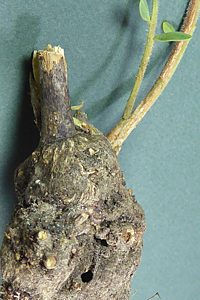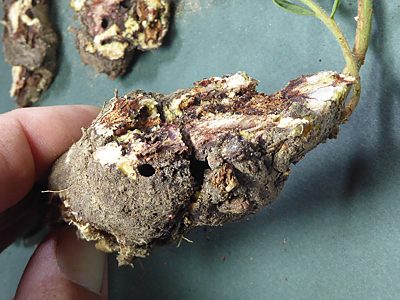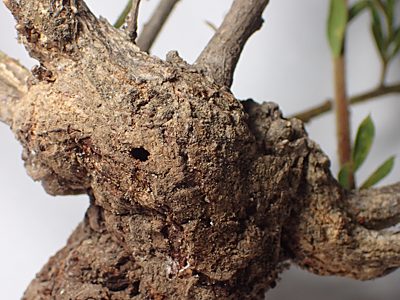Head, pronotum and ventral side dark silvery-grey to platinum-coloured; elytra mostly black with rather irregularly shaped white hair-scale patches; white hair-scales forming a prominent band on the on sides of the pronotum.
Occurrences in MU region are located on the eastern edge of the Mt Lofty Ranges. This species was thought to be known in SA from early collections only until it was 'rediscovered' by R.V. Glatz in 2011 in the Barossa Hills. More recently, a 1995 collection made by M.A. Hura from the southern Flinders Ranges has come to light.
| Legend | records | count of breeding adults, pupae and larvae |
| sites | count of major sites (unique 10 km grid cells +/- some distinct approximate localities) |
| adult | live = extracted alive; dead = extracted dead as intact or fragmentary remains; ex billet = reared and emerged from stored sections of host; ex pupa = reared from sampled pupa |
| pupa | extracted pupa; pupa ex larva = reared pupa from larva |
| larva | extracted larva (any stage including prepupa) |
| gall (only) | hatched or unhatched gall identified by form and position rather than contents |
| Plant names in green are hyperlinked to a matching host species page with plant photos. |
After initially finding numbers of adults on foliage of Golden Wattle Acacia pycnantha, I targeted nearby bushes of Daviesia based on the report of Cowie 2001 who had found them in Tasmania sweeping another genus of native peas ( Dillwynia). This yielded a similar number of adults on the foliage of D. ulicifolia ssp. incarnata in two successive seasons, and I subsequently established that they were a larval host after finding six dead adult remains and a larva in their bases.
| ¹ Legend | regions | SA State Herbarium regions (map)
EA: Eastern, EP: Eyre Peninsula, FR: Flinders Ranges, GT: Gairdner-Torrens, KI: Kangaroo Island, LE: Lake Eyre, MU: Murray, NL: Northern Lofty, NU: Nullarbor, NW: North-Western, SE: South-Eastern, SL: Southern Lofty, YP: Yorke Peninsula |
| size | The ellipse is the correct size when printed, indicative on a desktop screen, and likely to be wrong on a mobile device. |
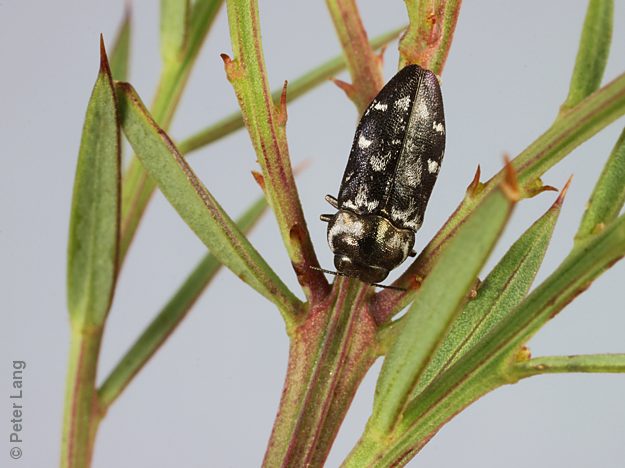
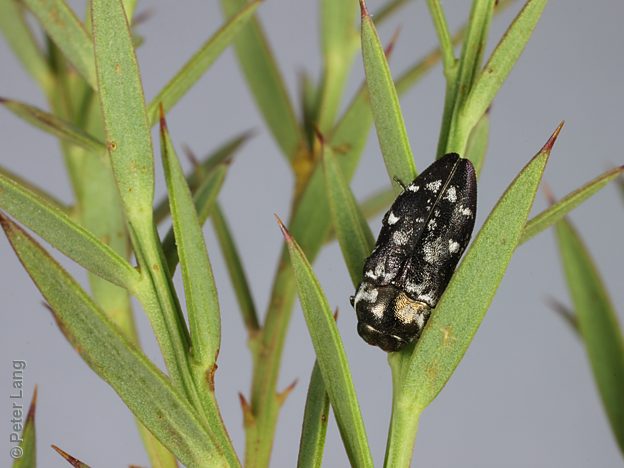
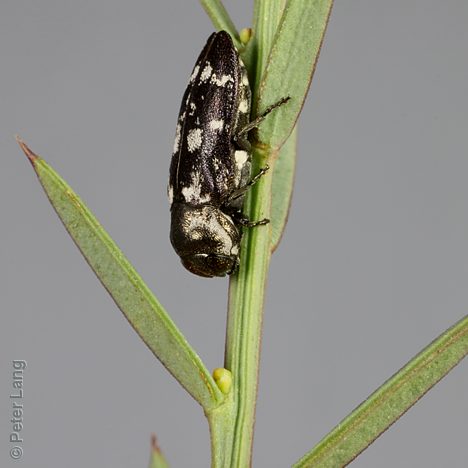
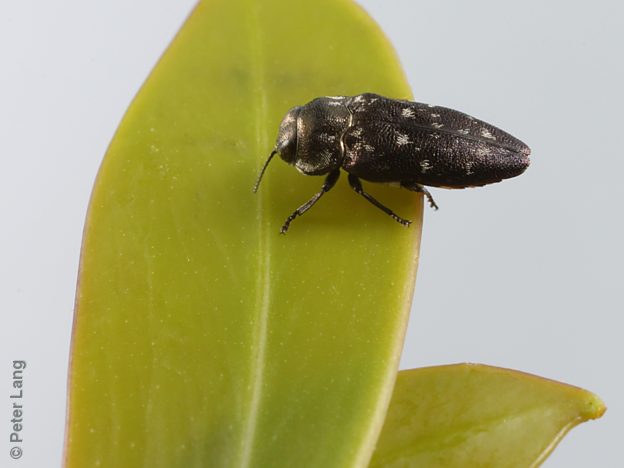
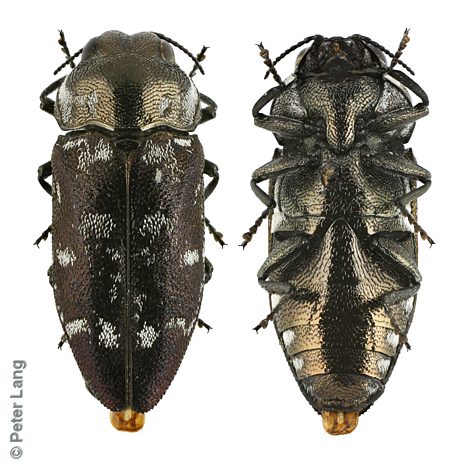
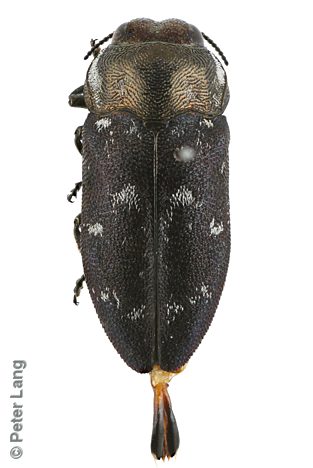
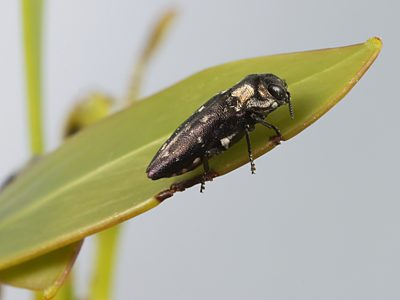
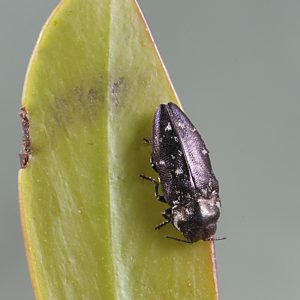
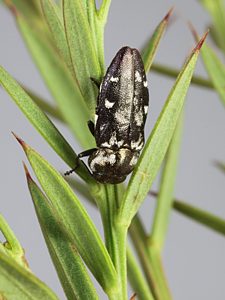









 rootstock at 3 cm below ground, MU, L1_x300.jpg)
 rootstock at 3 cm below ground, MU, L2_x300.jpg)
 rootstock, MU, L3_x300.jpg)
 rootstock, MU, D1_x300.jpg)
 rootstock, MU, D2_x300.jpg)
